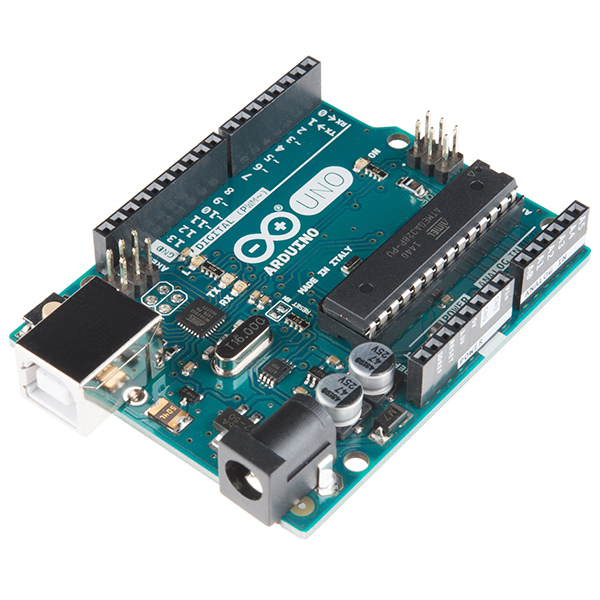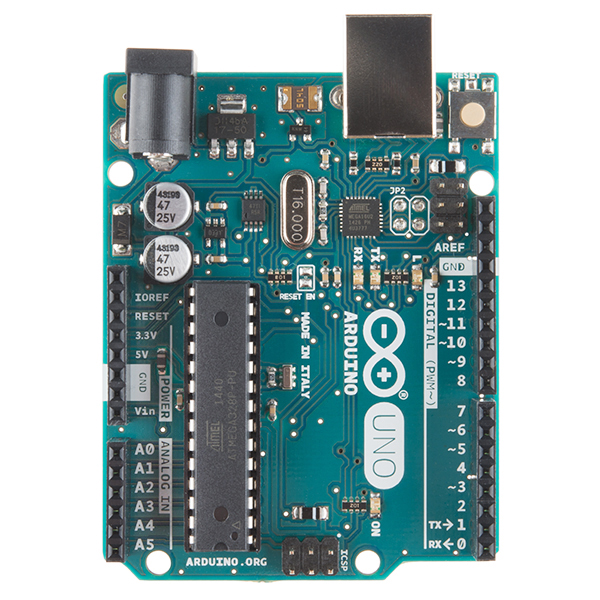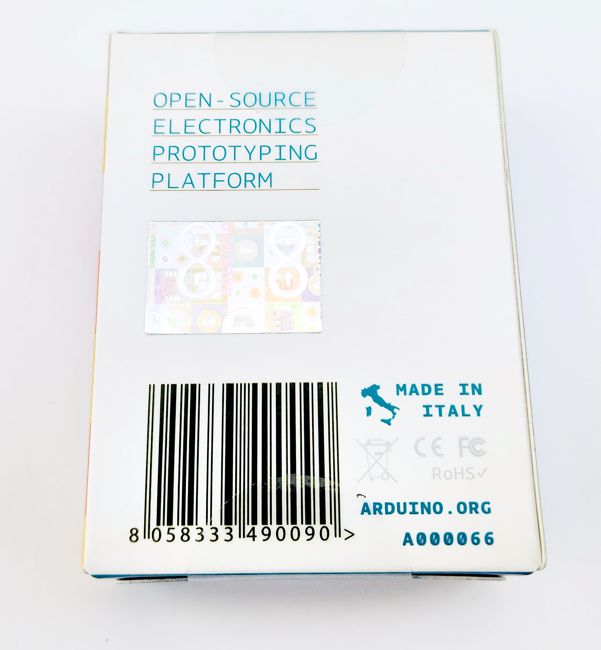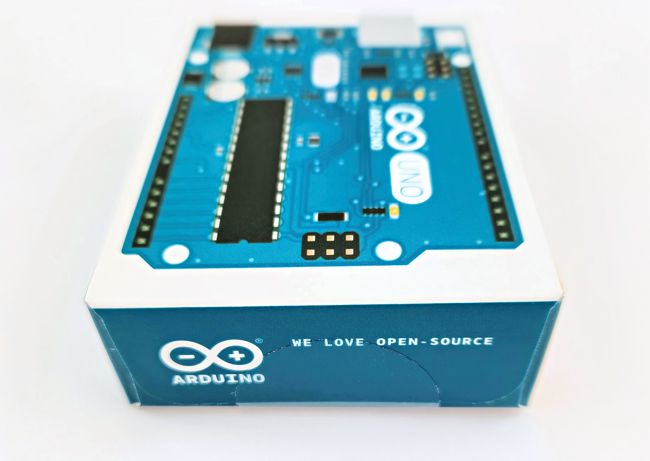- Description
- Reviews (0)
Description
The Arduino Uno is a microcontroller board based on the ATmega328. It has 14 digital input/output pins (of which 6 can be used as PWM outputs), 6 analog inputs, a 16 MHz ceramic resonator, a USB connection, a power jack, an ICSP header, and a reset button. It contains everything needed to support the microcontroller; simply connect it to a computer with a USB cable or power it with a AC-to-DC adapter or battery to get started.
The Uno differs from all preceding boards in that it does not use the FTDI USB-to-serial driver chip. Instead, it features the Atmega16U2 (Atmega8U2 up to version R2) programmed as a USB-to-serial converter.
With a 16 MHz clock speed, it’s able to perform instruction commands efficiently. Its 32 kB Flash memory gives it enough room for most sketches/code to upload into the Arduino Uno.
This is the DIP version. This version has the ATmega chip in a through-hole, so the chip can be easily replaced.
The SMD version simply has the ATmega chip surface mounted on the Arduino board making it more difficult to replace. Performance between the boards are the same.
Features
- Microcontroller: ATmega328
- Operating Voltage: 5V
- Input Voltage (recommended): 7-12V
- Input Voltage (limits): 6-20V
- Digital I/O Pins: 14 (of which 6 provide PWM output)
- Analog Input Pins: 6
- DC Current per I/O Pin: 40 mA
- DC Current for 3.3V Pin: 50 mA
- Flash Memory: 32 KB (ATmega328) of which 0.5 KB used by bootloader
- SRAM: 2 KB (ATmega328)
- EEPROM: 1 KB (ATmega328)
Only logged in customers who have purchased this product may leave a review.














Reviews
There are no reviews yet.